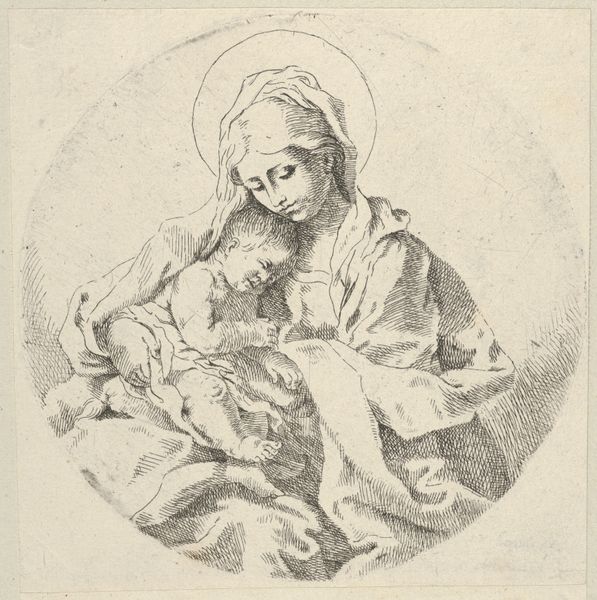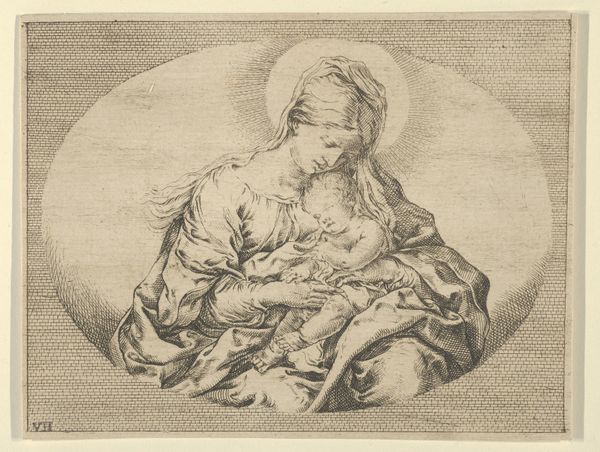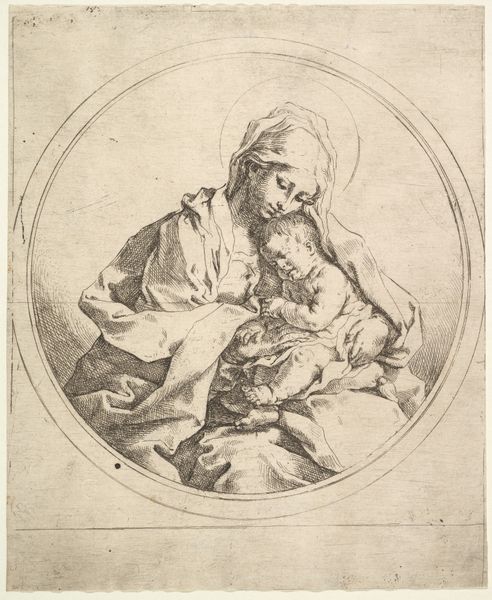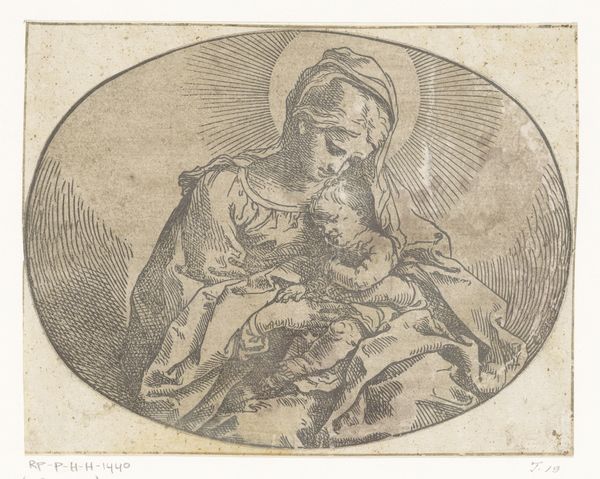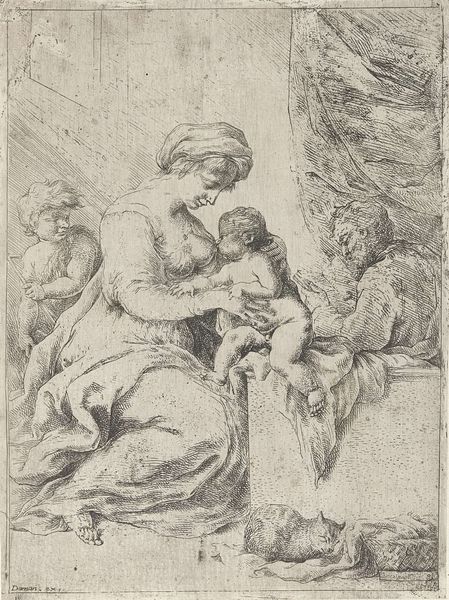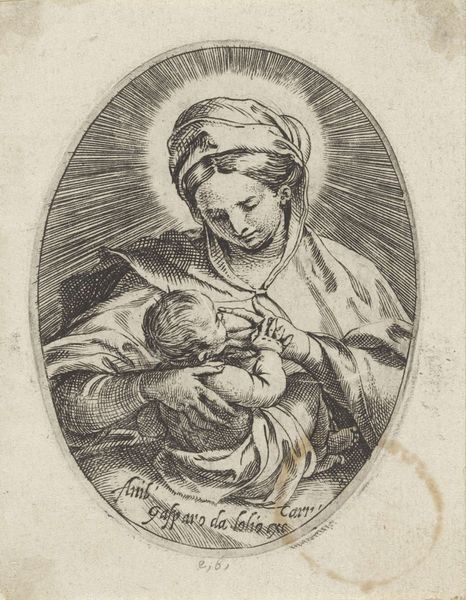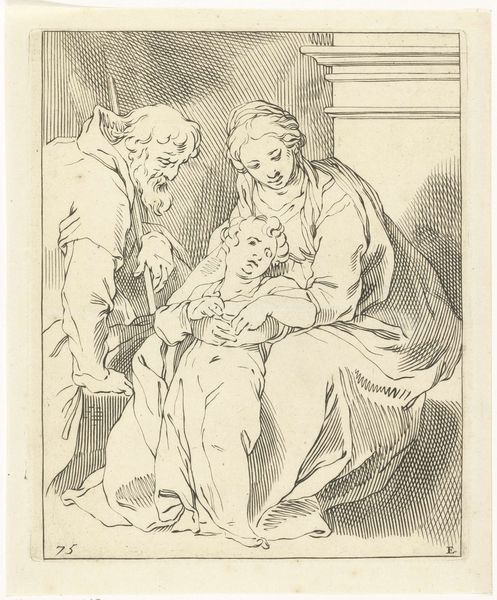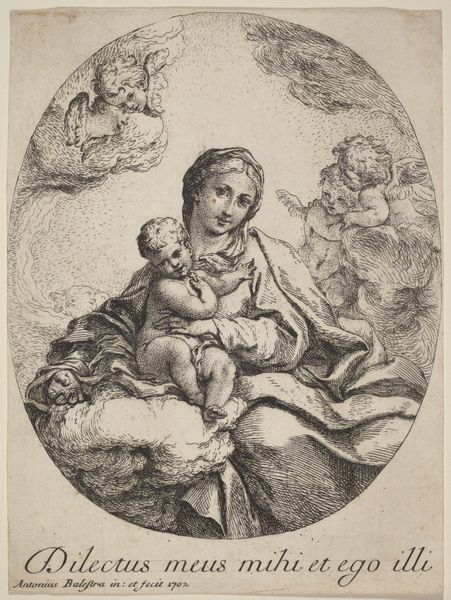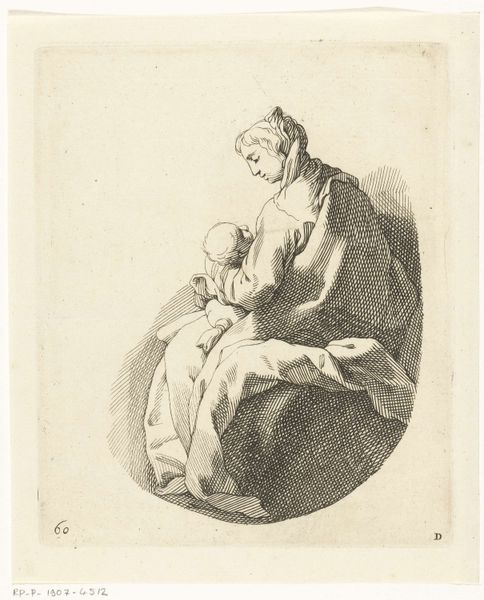
drawing, print, etching, paper, ink, pencil, engraving
#
portrait
#
drawing
#
baroque
# print
#
etching
#
figuration
#
paper
#
ink
#
child
#
pencil drawing
#
pencil
#
history-painting
#
italian-renaissance
#
engraving
Dimensions: Sheet (trimmed to plate): 5 5/16 × 4 7/8 in. (13.5 × 12.4 cm)
Copyright: Public Domain
Editor: Here we have Stefano della Bella's etching, "Virgin and Christ Child," dating from 1636 to 1646. I’m struck by its tenderness, a sort of intimate portrayal within that etched oval. What do you see in this piece? Curator: Well, I'm drawn to the radiant halo surrounding the Christ Child. Note how it diffuses light, almost echoing outwards to connect mother and child, and indeed us, the viewers. These aren't just lines; they represent divine grace, linking to centuries of similar visual representations. Consider the psychological impact, the comfort it might have offered during the turbulent Baroque era. What do you make of the Virgin's gaze? Editor: She’s looking down at him with such gentleness. Is that meant to signify humility or devotion? Curator: It’s multifaceted. The lowered gaze suggests humility, yes, but also protection, and perhaps even a hint of foreboding. Look at the way her garment is rendered. Does it remind you of anything? Editor: It seems quite simple, not overly ornamented. Compared to some Baroque works, it feels quite restrained. Curator: Precisely! Think about the rise of humanism and its influence, even within religious art. The focus shifts to a more relatable, human portrayal. Della Bella skillfully uses familiar symbols, reimagining them for his contemporary audience, adding a layer of accessible humanity. Do you think the artist was successful at translating human experiences into iconography? Editor: Definitely! The engraving process itself gives it this intricate yet accessible quality that adds to its intimacy. I hadn’t considered the context of humanism affecting even religious portrayals in that way. Curator: Seeing these familiar stories, visually reiterated across eras, reveals so much about cultural memory and evolving emotions, don't you think? It truly illustrates that the power of an image isn’t always just what’s depicted, but what it continues to communicate through time.
Comments
No comments
Be the first to comment and join the conversation on the ultimate creative platform.
